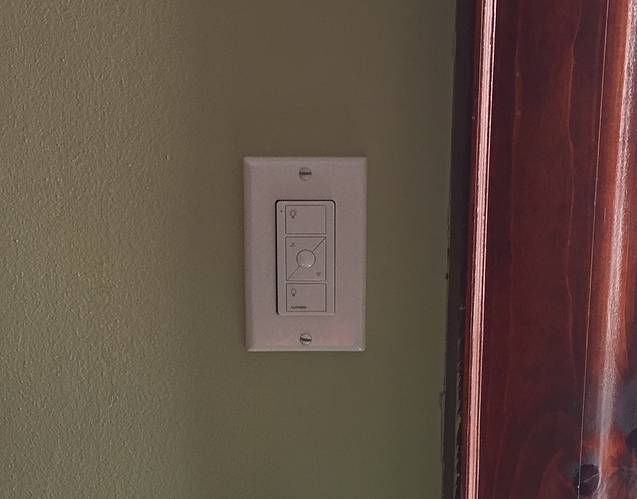As @mike.maxwell has said before, he uses Aeotec Nano Switches and Nano Dimmers in his home with Pico as the physical control. So basically, you can either take out an existing switch, connect the hot and the load together so there is always power to the light socket and put in a smart bulb to control with a pico you mount over the empty hole, or you can put one of the above Aeotec Nano Z-wave devices in the switch box and cover it with a pico and wall plate. You can even put the Nano device in the light canopy or box if there's room and it fits your need.
The Pico talks to the Lutron bridge, the bridge talks to Hubitat, and Hubitat controls the device (Aeotec Nano, smart bulb, smart switch, whatever). You can even create three-way or four-way switches without any wiring at all by just choosing a spot on a wall and mounting a pico there. Or not mount them at all, as Mike had mentioned. Keep it on a table, use the included mount to stick it somewhere without a plate or maybe one of Lutron's pedestals.
You can even control HomeKit devices (and non-HomeKit compatible devices via HomeKit automations and Homebridge plug-ins) by integrating Homebridge with Hubitat via @tonesto7 's port of @pdlovelace 's Homebridge plug-in. I'm controlling Insteon devices (not yet directly supported in Hubitat [Nudge-nudge @patrick] ) with Picos and Hubitat by using the Hubitat Homebridge plug-in and a plug-in for Homebridge called Insteonlocal
There are very few limits to what you can do if you're motivated. I'm not a developer, but with the help of all these talented developers and patience to take my time, learn and follow directions, I'm not hitting very many bumps in the road. I've never been happier with any home automation system up to now.
This is a Pico I simply surface-mounted on the wall next to my back door. It turns my deck light on/off (which is actually controlled by an Insteon wall switch) and if you hold the top button, it turns on my dining room lights, which are Sengled Element Plus bulbs in a ceiling fan. The Sengled bulbls are connected directly to Hubitat. If you press the up/down arrows, you can dim/brighten dining room the lights. If you press the middle button, it dims the dining room lights to 20%. If you press the bottom button once, it just turns off the deck light, but if you hold the bottom button, it turns off the dining room light. If you hold the middle button, it turns off both the deck light and the dining room light.


